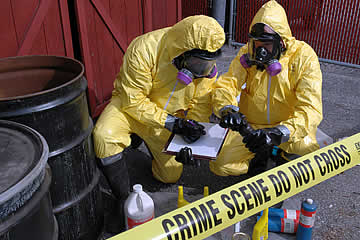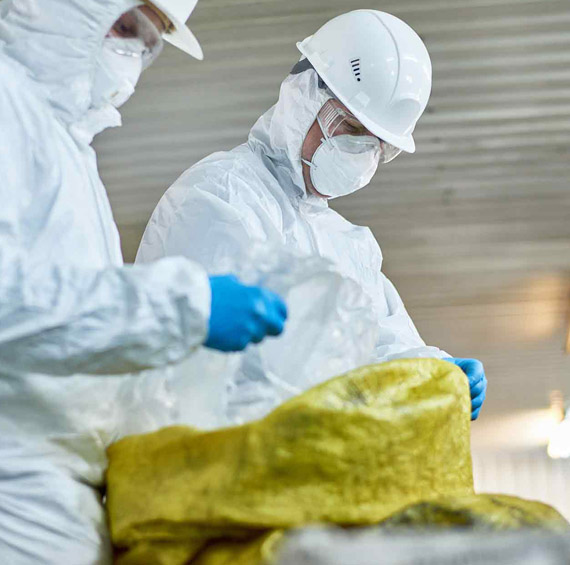Professional Biohazard Cleaning and Decontamination for Blood, Bodily Fluids, and Hazardous Materials
In the realm of biohazard cleansing and purification for blood, physical fluids, and dangerous materials, precision and expertise are paramount. The potential wellness threats linked with direct exposure to biohazards highlight the vital requirement for precise handling and comprehensive cleanup. Specialized training outfits experts with the expertise and skills required to attend to these dangerous situations efficiently. However, it is not just regarding tidying up; the importance of using appropriate decontamination strategies can not be overstated. As we navigate the elaborate landscape of biohazard cleaning, comprehending the nuances of laws, compliance, and the specific tools at play ends up being imperative in making sure a complete and safe purification process.
Health Dangers of Biohazard Exposure
Exposure to biohazards postures significant health and wellness dangers that can cause severe consequences for areas and individuals alike. Biohazards encompass a wide variety of biological compounds, consisting of blood, bodily fluids, mold, microorganisms, infections, and other potentially infectious materials. When people come into contact with these biohazards, whether with mishaps, incorrect handling, or ecological direct exposure, they encounter the threat of having serious health problems or conditions.
Among the key wellness threats related to biohazard direct exposure is the transmission of transmittable diseases. Bloodborne pathogens such as HIV, liver disease B and C, and numerous germs can be existing in biohazardous products, posturing a straight hazard to human wellness. Breathing in airborne biohazards like mold spores or entering into call with polluted surfaces can also lead to respiratory concerns, allergic reactions, and various other negative health and wellness impacts.
Moreover, biohazard exposure can have long-term health effects, with some conditions materializing years after the preliminary call (Blood Cleanup). Therefore, it is vital to focus on correct biohazard cleaning and decontamination to minimize these wellness dangers and ensure the safety and security of people and neighborhoods

Specialized Educating for Biohazard Clean-up
When it comes to taking care of biohazard clean-up effectively and safely, specialized training plays an essential duty in guaranteeing correct decontamination treatments are adhered to. Biohazard cleanup calls for specific understanding and skills to successfully minimize risks related to bloodborne virus, bodily fluids, and unsafe products. Professionals trained in biohazard cleaning undergo extensive instruction on exactly how to securely take care of, remove, and take care of biohazardous materials to avoid contamination and direct exposure.
Specialized training for biohazard cleaning covers a series of important topics, including appropriate individual protective equipment (PPE) usage, bloodborne pathogen understanding, decontamination methods, and harmful waste disposal procedures. People educated in biohazard clean-up are outfitted with the necessary expertise to assess contamination levels, identify potential risks, and carry out proper cleaning treatments in conformity with governing requirements.
Constant training and education are vital in the field of biohazard clean-up to stay updated on the current purification modern technologies, safety and security protocols, and guidelines. By spending look at this now in specialized training, biohazard clean-up professionals can efficiently reply to emergency cleaning situations and guard both public health and wellness and the setting.
Significance of Correct Purification Strategies
Making use of proper decontamination strategies is important in biohazard cleanup to properly remove harmful materials and decrease health and wellness risks. Effective purification not only ensures the elimination of visible traces of blood, physical fluids, and various other biohazards however also targets unnoticeable virus that may pose severe health hazards if not properly removed. By following rigid decontamination procedures, educated specialists can substantially minimize the danger of exposure to dangerous bacteria, infections, and bacteria that might result in diseases or infections.
Appropriate purification methods entail making use of specific tools and disinfectants that are especially designed to neutralize biohazards successfully. Complete cleaning and disinfection of polluted locations are important to stop the spread of pathogens and guarantee a secure setting for occupants. Furthermore, the right disposal of biohazardous waste adhering to decontamination procedures is crucial in preventing contamination of Find Out More other surfaces or individuals.

Devices and Devices for Safe Cleanup
When dealing with blood, physical fluids, or hazardous materials, biohazard cleansing specialists rely on specialized gear to minimize direct exposure risks and extensively sanitize the damaged area. Additionally, biohazard cleaning sets including disinfectants, absorptive products, and biohazard bags are made use of to safely include and dispose of polluted items.
Advanced cleaning tools like hospital-grade disinfectants, HEPA-filtered vacuum cleaners, and fogging equipments are used to sterilize surface areas and remove biohazards effectively. Specialized tools such as sharps containers and biohazard garbage disposal bins are utilized to securely manage sharp things and biohazardous waste products. By utilizing the right tools and devices, biohazard cleansing professionals can make certain an extensive cleanup process that focuses on safety and lessens wellness threats for both workers and residents of the affected area.
Rules and Conformity in Biohazard Cleaning
Correct adherence to guidelines and conformity criteria is vital in biohazard cleansing to make sure the safety and security of both personnel and the environment. Government agencies such as OSHA (Occupational Safety And Security and Wellness Management) and the EPA (Epa) have actually established specific guidelines for biohazard cleaning treatments to lessen health and wellness risks and ecological contamination. These policies cover a variety of aspects including the handling, transport, and disposal of biohazardous materials, along with the needed training and useful source safety devices required for personnel included in the cleanup procedure.
Biohazard cleaning companies should stay up-to-date with these policies to assure that their operations meet the required safety and security standards. Failing to abide with these laws can cause serious consequences, consisting of penalties, lawsuit, and endangering the health of individuals and the setting. By following rigorous regulations and compliance actions, biohazard cleaning firms can successfully alleviate dangers and guarantee a thorough and secure cleanup procedure for all celebrations involved.
Conclusion
Finally, biohazard cleansing and decontamination need customized training, appropriate methods, and adherence to guidelines. Direct exposure to blood, bodily fluids, and dangerous products postures considerable wellness threats, making it crucial to use the appropriate equipment and devices for safe clean-up. By complying with rigorous procedures and guidelines, experts can efficiently mitigate the threats connected with biohazard exposure and make certain the safety and security of both themselves and others.
As we browse the detailed landscape of biohazard cleaning, understanding the subtleties of guidelines, compliance, and the specific equipment at play comes to be vital in making sure a risk-free and detailed purification process. (Blood Cleanup)
When it comes to taking care of biohazard cleaning efficiently and safely, specialized training plays an essential duty in ensuring correct purification procedures are followed.Using correct purification methods is vital in biohazard cleanup to successfully reduce and get rid of harmful materials health threats. Furthermore, biohazard cleaning sets including disinfectants, absorbing materials, and biohazard bags are used to securely have and get rid of of contaminated items.
Government companies such as OSHA (Occupational Security and Wellness Administration) and the EPA (Environmental Security Firm) have established particular standards for biohazard clean-up procedures to decrease health and wellness risks and environmental contamination.
Comments on “Professional Homicide and Suicide Cleanup: Compassionate and Discreet Services”